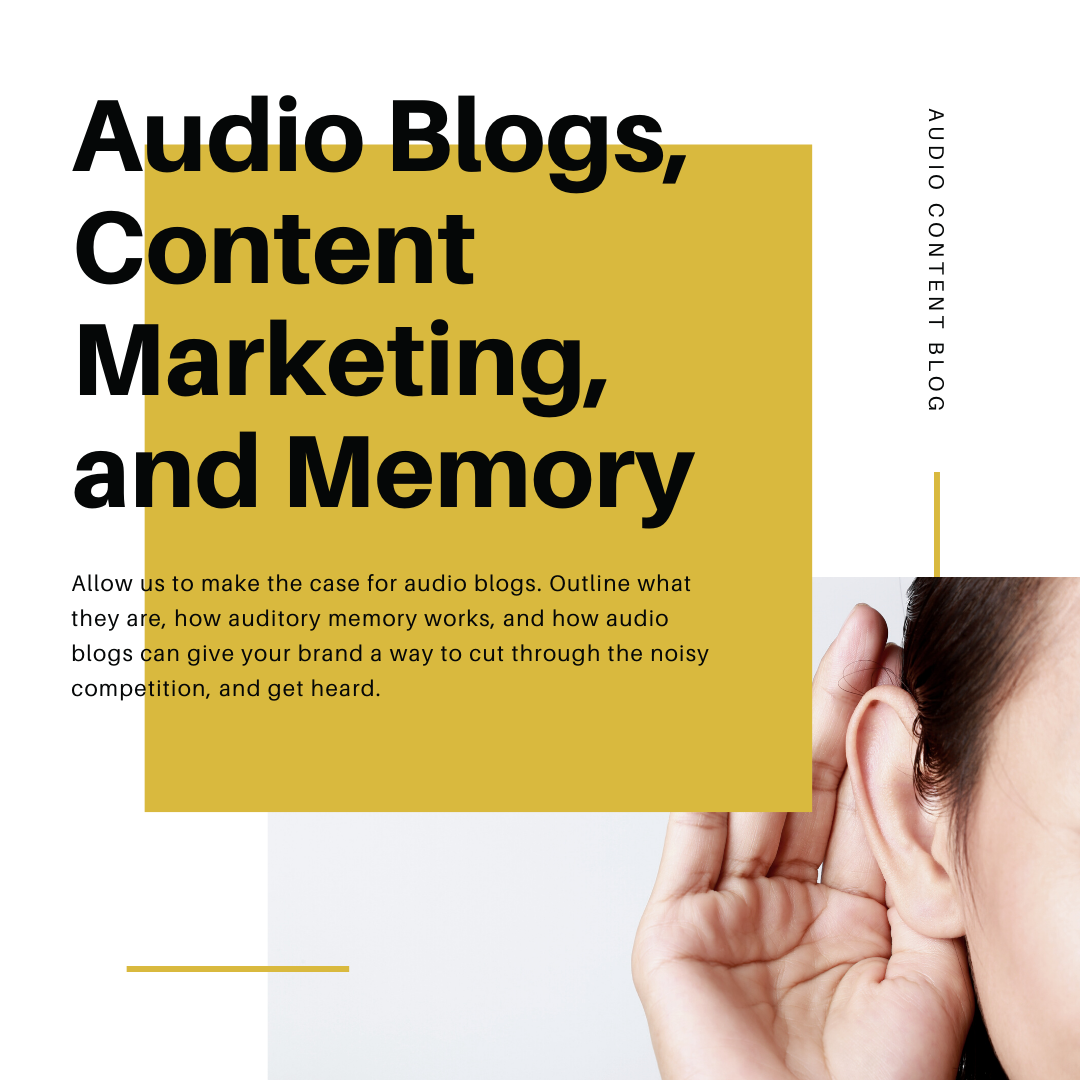In a content shocked landscape filled with noise, the main goal in marketing is being heard, and holding the attention of your audience.
And so, having a strong grasp on the way people engage with, recognize, and recall brand messaging, is important when it comes to content creation.
Audio blogs drive more traffic, deepen engagement, and connect with your audience in ways the written word can’t.
So allow us to make the case for audio blogs. Outline what they are, how auditory memory works, and how audio content marketing can give your brand a way to cut through the noisy competition, and get heard.
What is an Audio Blog?
Audio blogs are content, narrated by a human, and distributed as a sound file, on sound-based social media, like SoundCloud, or as a stand-alone podcast.
Top major publications, like The Atlantic, New Yorker, and WIRED, have partnered with audio agencies, like Audm, and Curio, to feature their top stories in audio form, read by quality, human narrators.
Why make ANOTHER version of existing content?
One truth about content marketing is that you don’t always need more stuff, you can syndicate & distribute what you already have, in new formats.
Ask yourself; why don’t *you* read more long-form content or blogs?
Be honest!
Most people simply do not have time to keep their eyes on the screen long enough to ingest quality content, no matter how high the quality.
Audio blogs give an audience a way to experience content, away from the screen, creating a memorable, emotional connection.
Sounds like BS, right?

According to a few informal polls we ran on Twitter, comparing emotional connection and memorability of content between blog posts and podcasts, the findings were in favor of podcasts.

Neuroscience research shows that emotions impact memory making, and so, providing an audience with a way to experience content through a more expressive medium like audio, is good, sound marketing advice.
Do audio blogs increase engagement with content?
In our own experience, the engagement analytics for blogs that feature an audio option at the top, are typically 4x that of text-only counterparts.
Our analytics also show that engagement metrics & traffic for audio content, when compared with blogs, is always higher, sometimes by as much as 10x.
The highest average time on page metric for blogs; 1-2 minutes.
The highest average time on page for our podcast; 12 minutes.
This Is Your Brain On Audio Content
Another winning argument for audio content, is one of neurological significance, meaning that the sense of sound impacts our brains in a significant way.
Activating our entire cerebral cortex, from the most basic limbic systems, to the most advanced parts of our consciousness, sound processing is unlike any other sensory experience, because it’s one that happens physiologically on the brain itself.
When we hear and process sound, our entire brain gets in on the game, synchronizing our bodies through rhythm with our cerebellum and nucleus accumbens, inferring pitch and timbre with our auditory cortex and amygdala, and associating memories and emotions with our hippocampus and prefrontal cortex.
And all of this happens, directly on the tissues of the brain.
If we could peel back the layers in your brain, we’d be able to identify structures on your auditory cortex called tonotopic maps, on which frequency selective hairs receive wavelengths and identify, and fire in resonance with, the pitches from external sound sources.
The truth is, what goes into your ear, comes directly out of your brain.
In regards to the marketing importance of this finding it shouldn’t be lost, that sound is a distinct and memorable experience that manifests itself physiologically in a brain.
If there is one lesson to take away for marketers looking to create memorable associations in the brain with marketing materials, listen to the latest neuroscience and create some content worth hearing.
Combining Audio and Visual Content Marketing
The truth is, when it comes to memorizing and engaging with content, there are several different learning styles aside from auditory, including visual and tactile.
Visual and auditory memory, in many ways work in parallel in the brain. Providing content that can be both seen and heard, ensures your message reaches as many people as possible, in as many ways as possible.
Another advantage with audio blogs, is that your blog gets new life in search engines as a piece of audio content and gets tagged like a podcast, giving your content distribution dominance over your competitors that lack an audio alternative.
In Conclusion
As podcasts continue to rise in popularity, and more brands & businesses join in the attentional hunger games of content marketing, audio blogs are going to become more commonplace.
Audio blogs deepen your content’s engagement in ways that are neurologically distinct and simply impossible with text.
Audio blogs are distributed and found by audiences on platforms like SoundCloud, Spotify, iTunes, places most blogs dare to dream.
And finally, audio blogs allow your brand an easy way to make content worth hearing.

